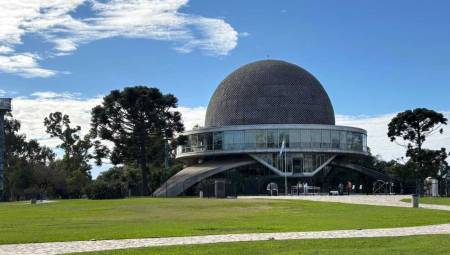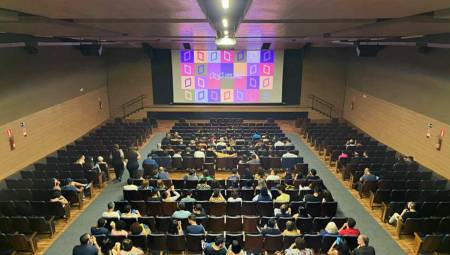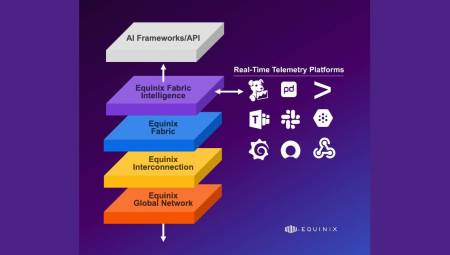by Julián Arcila
When the magazine AVI LATINOAMÉRICA published its first article on digital signage, the main theme of this note was the different options of screens and monitors that an integrator could use to install one of these applications. Without saying that the approach was not the right one, today, with a little experience in this segment, the writer believes that talking about this concept should transcend the screens and in general the hardware. But there is a problem: many AV integrators have not realized it and believe that the business is still limited to talking about teams.
And everything seems to indicate that AV professionals have not agreed on what their scope should be, and while in the United States and other developed markets there is talk of diversification and sale of services, rather than boxes, in Latin America it is still thought that integrators are to assist in complex applications, and that for the production and development of content are software developers, graphic designers and advertisers.
Before determining if there is an erroneous one between these two visions, the important thing is to note that the digital signage market is experiencing a strong evolution that will progressively expand to the whole world, including Latin America. This new stage suggests AV integrators more trained in IT and telecommunications segments, that is, truly attending convergence. In this sense, it is not unreasonable to think that AV integration companies should, in the near future, incorporate a division of production and development of content for digital signage, because the business seems to be there.
Breaking paradigms
AVI LATINOAMÉRICA interviewed Gary Kayye, director of Kayye Consulting, who was also chosen in 2003 as the educator of the year by InfoComm, and Luis María González, commercial manager of the Argentine company Congress Rental. The comments of professionals are quite useful to understand a trend that day by day takes more strength. Although on some issues opinions seem to differ, the fact is that both professionals mention adaptation as the only way to remain in force.
At the end of 2008, Kayye, columnist of the prestigious magazine Sound & Communication but also director of his own blog specialized in these topics, wrote that digital signage should no longer be seen as the next big trend, but as a reality that is now present. Not fully understanding the approach, he was asked a few questions; Kayye delved into that the issue is no longer about hardware or equipment, but about the offer of services. Words plus words less, the right term seems to be creativity.
"The commercial AV market is and has been focused throughout its existence on selling facilities, offering services and selling products. In the case of digital signage, AV professionals see it as a way to sell more flat screens and monitors. But in reality, this market is related to content production. Today it's not impossible for us to sell content, but we haven't been – at least for the last 20 years or more – even remotely good at doing it."
Did he miss the leadership?
Reading kayye's words, the idea that could emerge is that the AV segment lost the leadership of the digitized signage segment; however, it is worth wondering if you ever had that distinction of pioneer. Opinions vary, though not substantially.
On the one hand, Kayye believes that AV integrators never had that privileged place. Remember that about 10 years ago NEC and other renowned manufacturers had the vision that digital signage (DS) would be an important topic one day. "But DS marketers used that idea only to sell more monitors. They weren't creative enough (and most aren't yet) to sell production and content. This is a business currently dominated by advertising agencies; we should be doing that," he says.
However, for González, in Latin America the issue has other nuances, because in the specific case of Argentina the AV integrator companies are SMEs and the DS sector seems to become a large volume business in which many of the small and medium-sized companies that make up the market are left out. However, this professional believes that the DS is a convergence business and that this allows it to be addressed from other areas, such as telecommunications, a segment in which integrators have not traditionally had technical or commercial strengths. "As has happened with other times with different businesses, we are witnessing a moment of change in paradigms. The one who adapts wins and the one who doesn't probably disappear," he says.
In search of the highest bidder
And it is that the environment supposes several reflections. With the current competition in each of the technological segments, manufacturers will strive every day to establish alliances with companies that can offer them a medium to long-term business environment.
In this direction, Kayye suggests that there is currently a good relationship between manufacturers and integrators, because the latter still sell equipment; however, the relationship with IT companies is better, as they seem to have understood the secret of what it means to sell DS in the future, not now. He explains that selling hundreds of screens for a university is a business of the moment, but selling the service of supplying the content of what the screens display on a daily basis is where the business is moving.
González envisions a fairly competitive environment in this field, since as DS solutions are basically software applications, every day more suppliers will appear from the big brands, as well as from the intermediate and small local developers. This situation began to be glimpsed, he says, in the last version of InfoComm.
A species on the way to extinction?
To finish this article and perhaps to result in a concept mentioned above, if they do not adapt to this new reality, many companies could disappear.
For Kayye, the AV integrator could be a species on the way to extinction, although he clarifies that it will always be necessary to sell equipment, although this business will be made more difficult every day by the consolidation of e-commerce.
Similarly, González ventures to predict the future of this segment and ensures that for the coming times "we will witness a strong pressure from integrators of IT and telecommunications technologies (...) Some audiovisual integrators will choose to get out of this business, others will be able to continue making some installations, and others will specialize in the segment."
Kayye ends by inviting you to be more creative. "We are very good at selling boxes, but not at selling creativity. I don't think I should dig too deep, but those who are reading this article and don't understand me yet, maybe they're never going to make it."









































































































